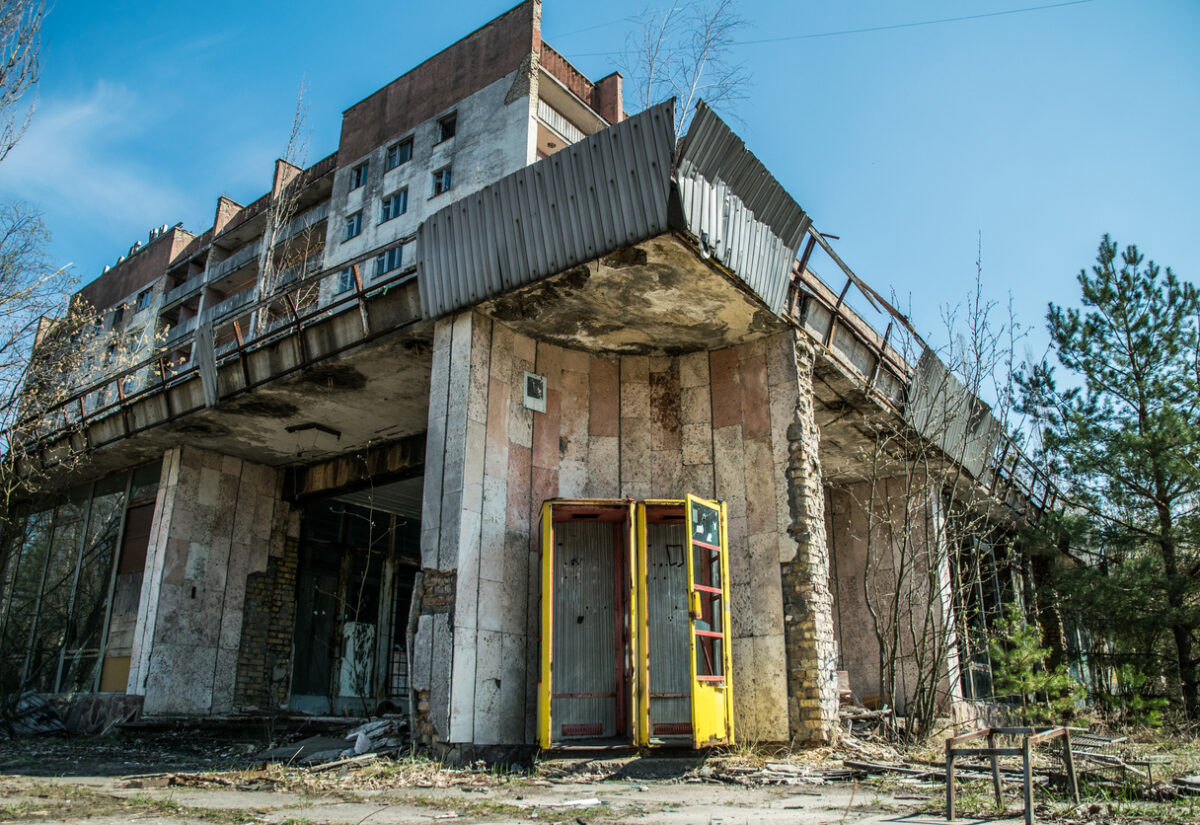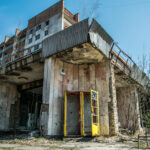 Getty Images/iStockphoto
Getty Images/iStockphotoAcross the globe, there are towns and villages that once thrived with life but are now eerily silent. Abandoned due to war, economic collapse, natural disasters, or changing industry, these places stand like time capsules, often with buildings, personal belongings, and infrastructure left just as they were. In many cases, nature has crept back in, adding to the haunting beauty. Here are some abandoned historical towns that remain locked in a totally different era.
Pripyat, Ukraine
Perhaps the most well-known abandoned town in the world, Pripyat was home to workers at the Chernobyl Nuclear Power Plant. After the 1986 disaster, the entire population of nearly 50,000 was evacuated within days. What they left behind paints a chilling picture of sudden departure: schoolbooks still open on desks, toys strewn across nursery floors, and decaying fairground rides waiting for an opening day that never came.
Pripyat is now part of the Chernobyl Exclusion Zone. While it’s technically safe for short visits, the ghost town remains a stark reminder of the consequences of human error and a rare glimpse into life frozen in the Soviet 1980s.
Oradour-sur-Glane, France
On 10 June 1944, the Nazi SS massacred 643 residents of this small French village in one of the worst atrocities committed on French soil during World War II. The town was never rebuilt. Instead, it was left as it was, with burnt-out buildings, rusting cars, and decaying bicycles marking the spot where lives were brutally ended.
Today, Oradour-sur-Glane stands as a powerful memorial. Visitors can walk through its silent streets and see homes, shops, and even a sewing machine left untouched. A new village was built nearby, but the original site remains untouched as a haunting tribute.
Bodie, California, USA
In the late 1800s, Bodie was a booming gold-mining town with a population of around 10,000. By the early 20th century, the gold dried up, and so did the people. Today, it’s a preserved ghost town where visitors can peer into saloons, homes, and general stores—many still containing original furnishings and goods from more than a century ago.
Bodie is now a State Historic Park, kept in a state of “arrested decay”—preserved just enough to halt further deterioration without full restoration. It offers a striking look at frontier life during America’s gold rush era.
Kayaköy, Turkey
This hillside town in southwestern Turkey was home to a thriving Greek Orthodox community until the population exchange between Greece and Turkey in 1923. Residents were forced to leave, and the village has stood empty ever since.
Over 500 houses, two churches, and countless cobbled streets now sit abandoned, many overtaken by vegetation. Though structurally sound, the homes are roofless and weather-worn, making Kayaköy a haunting open-air museum of forced migration and cultural loss.
Hashima Island (Gunkanjima), Japan
Often called “Battleship Island” due to its shape, Hashima was a coal-mining facility operated by Mitsubishi. At its peak in the 1950s, over 5,000 people lived on the tiny island, making it one of the most densely populated places on earth.
As petroleum replaced coal in the 1970s, the mine shut down and the island was abandoned almost overnight in 1974. Buildings now stand in ruins, and the sea constantly reclaims more of the concrete structures. In recent years, limited tourism has been allowed, and the site even featured in the James Bond film “Skyfall.”
Kolmanskop, Namibia
In the early 1900s, Kolmanskop rose rapidly in the Namib Desert after the discovery of diamonds nearby. The town boasted luxury for its time—complete with a hospital, ballroom, theatre, and even an ice factory. But by the 1950s, the diamond rush had moved elsewhere, and the town was left to the encroaching sands.
Today, Kolmanskop is a surreal sight, with sand dunes swallowing doorways and sun-bleached furniture visible inside partially buried homes. It’s a favourite among photographers and a striking reminder of how quickly wealth and population can vanish.
Craco, Italy
Perched dramatically on a cliffside in southern Italy, Craco was once a bustling medieval village. Plagued by earthquakes, landslides, and poor infrastructure, the town was gradually evacuated in the 20th century, with the final residents leaving after a major landslide in 1991.
Now empty, its dramatic architecture and weathered facades remain eerily intact, drawing filmmakers and tourists alike. Craco’s haunting atmosphere and panoramic views have made it a filming location for several movies, including “The Passion of the Christ.”
Humberstone and Santa Laura, Chile
These neighbouring nitrate mining towns flourished in the Atacama Desert in the late 19th and early 20th centuries. They were abandoned in the 1960s when synthetic alternatives replaced natural nitrate, collapsing the industry virtually overnight.
Today, rusting machinery, empty schools, and long-deserted housing blocks remain under the baking sun. The two towns are UNESCO World Heritage Sites and serve as a fascinating record of a vanished way of life shaped by the desert and the global market.
Plymouth, Montserrat
In the Caribbean island of Montserrat, the town of Plymouth was once the island’s capital. But a volcanic eruption in 1995 covered much of the city in ash and rendered it uninhabitable. The entire southern part of the island was evacuated, and Plymouth was declared a restricted zone.
The abandoned buildings and streets—many buried under layers of volcanic debris—still stand as a stark and sobering sight. It’s one of the few places in the modern world where a capital city has been lost and left largely untouched.
Varosha, Cyprus
Once a glamorous resort in the city of Famagusta, Varosha was a top tourist destination in the Mediterranean in the 1970s. But after the Turkish invasion of Cyprus in 1974, the area was fenced off and abandoned. For decades, the area remained a no-go zone, frozen in time.
Recently, parts of Varosha have been opened to the public, though it remains a politically sensitive site. The decaying hotels, shops, and beach resorts offer a haunting glimpse of a luxury holiday destination turned ghost town.



